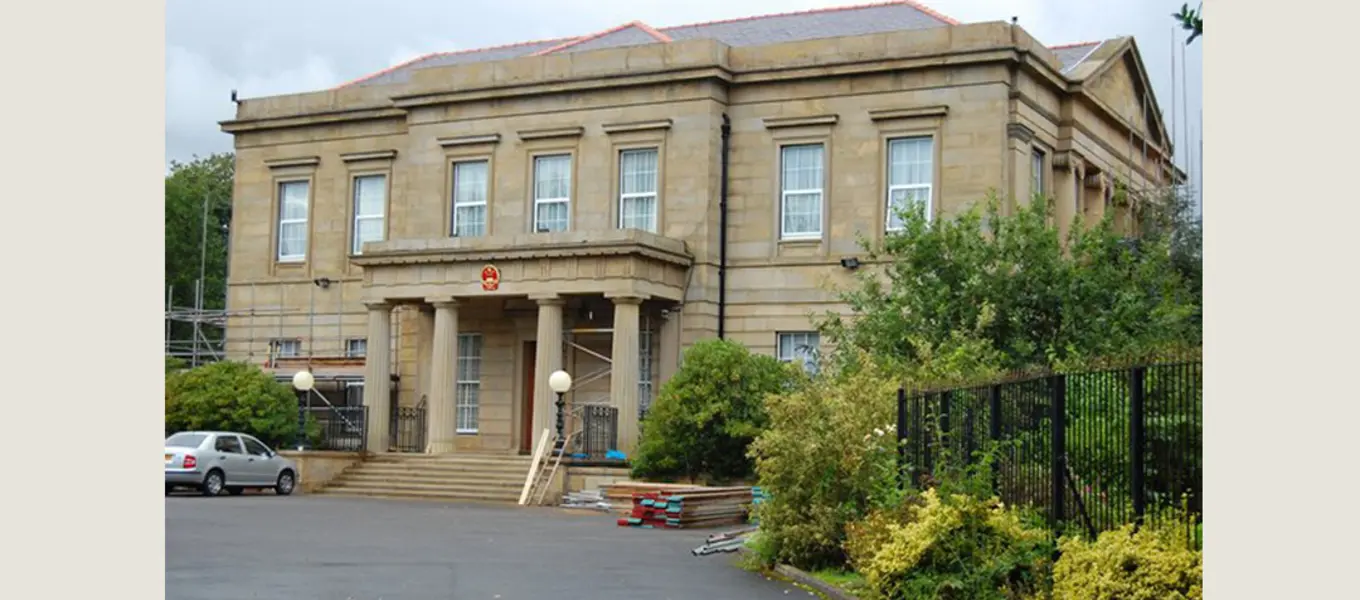Collections & Archives Assistant Ian Gregory is currently transcribing entries from our historic visitors’ books and reports on another visit of note he has come across:
During the 19th century, growing wealth and increasing populations meant that new building works started across the United Kingdom. Here at Chatsworth the 6th Duke almost doubled the size of the house. Close in time to his works, a smaller house was built from scratch near Stockport. Today Stockport is in Greater Manchester but then most of it was in Cheshire, although some of it was in Lancashire. The house in question was built around 1832, in Grecian style, with honey coloured stone and a columned portico. Its name is Mauldeth Hall. On 5 July 1844, a party who set out from there signed into Chatsworth’s visitors’ book. They were led by a Revd. W.F.H. Hooper, the son-in-law of the Halls’ owner. He was the incumbent at St Paul’s church in Withington.
Hooper’s family were not the first owners of Mauldeth Hall. It was built for an American born inventor called Joseph Chessborough Dyer (1780-1871). When young, Dyer had invented an unsinkable lifeboat in which he and his father had sailed around New England. He settled in Britain in 1811 and married a British woman. Dyer introduced new techniques of steel engraving and nail making to Britain. He was involved in founding the Manchester Guardian newspaper. There is no evidence I know of that Dyer and the 6th Duke ever met, but had they done so they may well have found common interests. The Duke took a keen interest in science and technology. His support of Joseph Paxton is well known and Paxton was a pioneer in horticulture and architecture. The Duke supported Parliamentary reform and so did Dyer.
Dyer and his family spent only a short time at Mauldeth Hall, perhaps because of the cost of maintaining it. It is not clear from the 1841 census who was living at the Hall then. Its next undisputed owner was Edmund Wright (born 1781), a cotton merchant and owner of a calico printing business. His daughter Mary was married to our Revd. Hooper. She may have accompanied her husband to Chatsworth that day but we can’t be sure. The entry reads ‘Revd. Hooper and party,’ no one else is named. Hooper was to die at the Hall in 1849.
Following Wright’s death in 1852 the Hall became a residence of the Bishops of Manchester. The Church sold it to another calico printer in the 1870s. Since then it has been a hospital and a home for physically disabled people. This is a familiar story in the history of country houses. All too often it ends with the property being demolished, but not this time. In the 21st century Gerry Yeung, a restaurant owner and philanthropist, bought Mauldeth Hall and spent money restoring it. It is not open to the public but has been a residence of the Chinese Consul. It has fared better than some places mentioned in Chatsworth’s Visitors’ Books. Some now only exist as memories and black and white photos.

Image: Mauldeth Hall. Photographed by Trevor Harris licensed under CC BY-SA 2.0






